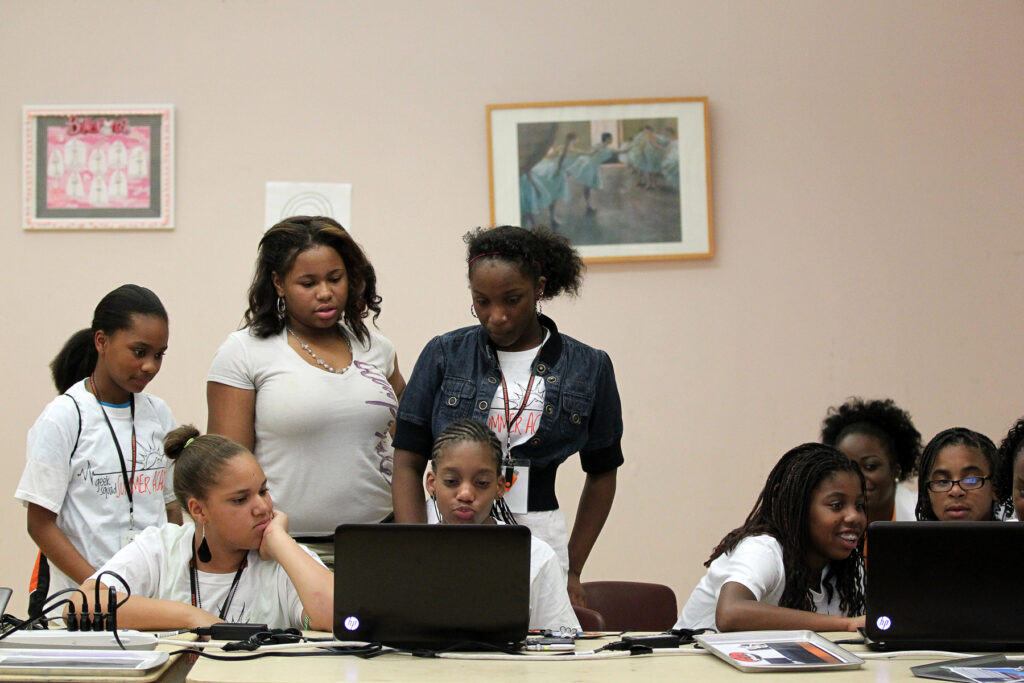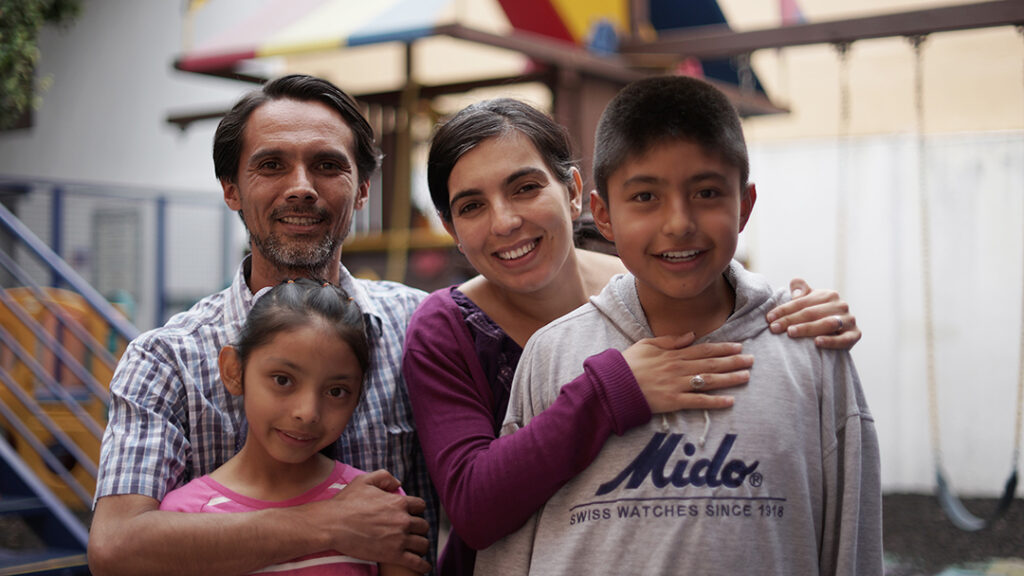
MENTAL HEALTH MINISTRY: PROVIDING HOPE AND HEALING
The colours symbolise peace and nature, the brain represents the mind and the hands imply care—thus giving the impression of ‘the mind in caring hands.’ (Lauren Bikhani, Mental Health Ministry Coordinator at All Saints Catholic Church, Ennerdale, Johannesburg).
Design by Warren Singh from DesignCreed.
Special Report • Mission Among The Youth

AN OPPORTUNITY IN DIFFICULT TIMES
Listening to the youth, especially in their adolescent stage, and to invite them to open themselves to the figure of a loving God who offers them security, has become an extraordinarily relevant ministry.
BY MARIA NOEL | PSYCHOLOGIST, SEGOVIA, SPAIN
Adolescence is a period of life that can be as disconcerting as it is marvelous for those who are experiencing it, as well as for the adults accompanying them. The all too familiar and well known physical and psychological changes that take place during this time, have behavioral consequences of oscillating moods, and of questioning the established, and are often difficult to cope with. The search for meaning in life during these years can lead to identity crises, resulting in a lack of direction and purpose. Moreover, born in the digital age, teenagers are used to ‘multitasking’, to apps, to the ‘cloud’, to tutorials, to social networks, and to immediate gratification. We as adults often fail to understand their different ‘language’. Yet we cannot respond in our old familiar ways and merely limit ourselves to ‘surviving’ their adolescence or ‘wait’ for them to mature.
Relational beings
From a young age, we are shaped by our relationships with others. We grow up in the light of the gaze of others. As adolescents, we continue to look for referents, but our peers, our equals, remain a dominant force, providing us with a sense of belonging. All this has to do with identity, but mainly with feeling accepted, validated, and united with others. We are after all relational beings. Relationships are however becoming increasingly virtual, with little verbal interaction. ‘Emojis’ are used to express feelings. We break the link with others through ‘ghosting’, we cease to communicate, we block others, causing silence. This leaves us, all of us, in a situation of abandonment, of loneliness. The lack of words causes an emptiness which is filled with fears and insecurities, and consequently, we become emotionally dysregulated. This lack of control, can lead many young people to the extreme act of self-harm where physical pain is preferred to mental pain.
The encounter with the other
The attachment theory (Bowlby 1969) refers to the bond that unites us to someone very particular, such as a parent in childhood, a close friend in adulthood, a partner, a priest, someone who has the capacity to give us security, to calm us down and to regulate us emotionally in times of stress. That person is regarded as a ‘safe haven’ and this reassures us that there is someone available whom we can trust. We can also be that person for an adolescent, but for this to happen the channel of communication must always be open, for both adults and adolescents.
Adolescence in the abstract does not exist. There is ‘the adolescent’ with his or her concrete life, in his or her individuality, and that is whom we approach.
An attentive and loving gaze can help to shape an adolescent. This does however not begin in adolescence. It is a journey of presence, support and closeness that is constantly being strengthened. It is important for us to become a port from which they can go out to explore the world—internally and externally—, and a refuge to return to in difficult moments. For that, we need to understand their world and strengthen their confidence in themselves and in others so that they can project themselves into the future with hope, without cutting off their roots, building their autonomy, never being alone. Therefore, I venture to say that adolescence in the abstract does not exist. There is ‘the adolescent’ with his or her concrete life, in his or her individuality, and that is whom we approach.
Listening and attentiveness
The key is to be receptive to listening: an act of attentive, selfless, loving listening, which indicates the value that the other person has for us beyond his or her ideas. Evidence of this form of listening is the time we dedicate to ‘being’ with the other person, accompanying their processes and not imposing our own rhythm. Open-minded, respectful, and hopeful listening, being sensitive and accessible rather than reactive. In trying to connect, we make them feel that we resonate with and value what they are experiencing in their inner world.


Once they feel heard, they can learn to silence a lot of noise, and listen to one voice among all the voices. Provoking them with questions such as: ‘Who am I? How do I want to be? What is my purpose in the world?’ can help them to accept their qualities and limitations, and to look deeply inside themselves, discovering mobilizing desires for searching. This search invites them to go outside of themselves, and each decision will bring them closer to or further away from what they are called to be, and able to decide what makes them more authentic.

Listening requires an unconditional acceptance of the other, and is a fundamental element of the path towards healing. It has Christological value: it implies assuming the attitude of Jesus towards the people he met (cf. Phil 2:6-11). And that commits us as adult Christians.
Jesus calls each one by name. In friendship with him, we are called upon to participate in his creative work, placing our talents at the service of others. In our relationship with others, we recognize the love of God, who loves us, cares for us, accompanies us and sustains us. This shared journey through history is an experience of communion, of ‘being Church’.

We know that young people seek gratification in trying new things, connecting with their peers in new ways, feeling more intense emotions and rejecting established ways of doing things. Through them, being open to newness, the Church can renew its spiritual ardor and apostolic vigor. It needs such enthusiasm. The Word of God asks us: ‘Remove the old leaven to become young dough’. At the same time, it invites us to put off the ‘old man’ in order to put on the young ‘new man’.
In our relationship with others, we recognise the love of God, who loves us, cares for us, accompanies us and sustains us.
Loving attention to the other must be a sign that identifies us as Christians. It is the task of the whole community to seek creative and daring ways of encounter, where we see the face of God in each person, especially where life hurts, and to find ways of expressing and witnessing to that God who gives himself to us, who is and will remain a permanent novelty.
Witnesses to an experience
As Christian adults, we are challenged by young people to be witnesses of what we preach. Believers and, at the same time, credible. Faith is a matter of encounter, not of theory. Prayer is the very personal encounter with the One who can transform our lives. We must encourage young people to seek out witnesses whose friendship with Jesus changed their lives, when they felt that everything was going uphill. Christ himself— who accepted to go through passion and death—made himself a neighbor to all those who suffer. The message to our teenagers should be that amid any discomfort, love triumphs; it is stronger than the weakness of those who give in to pain. To live this, it is important to be prayerful young people with the capacity to transform uncertainty into confidence, decay into hope and isolation into fraternal love.
God is the One who knows only how to love, and it is trust in Him which changes life forever.
It is time to walk together in good company and without fear. For that we have to bring them closer, as witnesses, to the mystery of love.
Mysticism
Mystics share with us their experience in their relationship with God; their experience of feeling loved, accepted, welcomed. St Teresa of Jesus tells us that prayer is ‘dealing in friendship with the one we know loves us’. This manifests her absolute certainty of God’s love for us. God is an available figure, always. ‘Never, daughters, does your Bridegroom take His eyes off you… He waits for nothing else but that we look to Him. He so esteems our turning to look at Him that, that no diligence will be lacking on His part’ (Way of Perfection, chapter 26, 3). He is that ideal ‘secure base’ figure. He loves us as unconditionally as we need, and that experience is restorative. In the experience of the mystics the face of God who is love outstands. God is the One who knows only how to love, and it is trust in Him which changes life forever.


We must help young people to see what kind of God’s face they have in their minds and hearts, and to bring them closer to the experience of a loving God. The Pope said to the young people at the 2023-WYD in Lisbon: ‘Let’s think about this in our hearts. We are called as we are, with the problems we have, with the limitations we have, with our overflowing joy (…). Jesus calls me as I am, not as I would like to be. We are a community of brothers and sisters of Jesus, sons and daughters of the same Father’. Welcoming the other as he or she is given to me. Never identify the person with what appears of him or her, nor with his or her behavior, because we then in fact close ourselves to that person and to their mystery.
Relationship is a place of evangelization. Every relationship is an opportune moment to proclaim God. When I establish a meaningful relationship with another person, I give him or her my affection, not out of personal interest, but as a small sign of God’s love, so that the beauty of a life open to this Love may be discovered. We make the invisible visible. This is mysticism.

